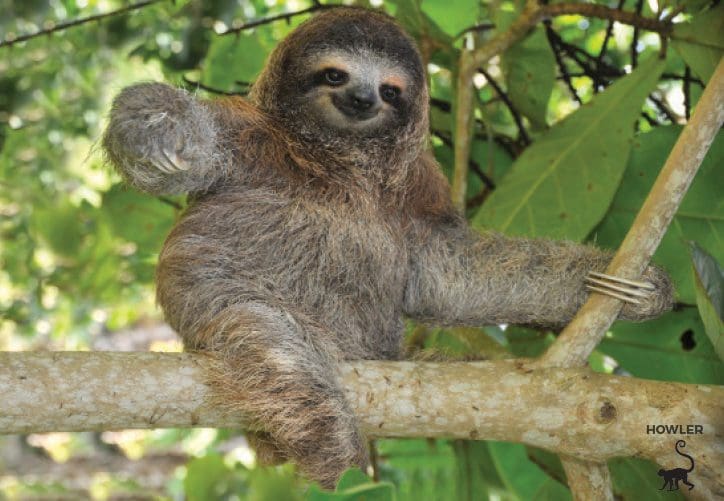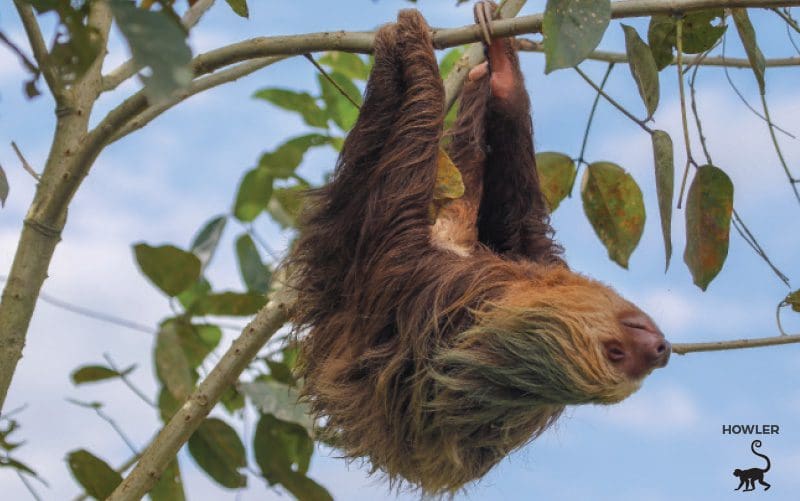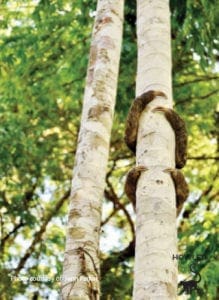
Difference between two-toed and three-toed sloths
See the newest issue of Howler Magazine, click here!
Sloths: What’s the difference between a two-toed and three-toed sloths? Sounds like the start of a corny joke or trick question, right? Well, aside from the obvious and not particularly funny response — one has two toes and the other has three — there are actually a lot of remarkable differences between them. But before we talk about what makes them so different, let’s look at some of their similarities.
For starters, both the two-toed and three-toed sloths belong to the order Pilosa and thrive in the rainforest. These adorable and slow-moving mammals both prefer the higher reaches of the trees, where they are safe from the predators at lower heights. In fact, they only come down to the forest floor once a week to defecate. Sloths feed primarily on leaves but will also sometimes eat fruits and insects. Their digestive system can take up to a month to break down the foliage that they consume, which is one of the reasons they sleep so much. They have been known to graze the leaves of 50 different types of trees, but the cecropia tree is their absolute favorite.

Separate families
The similarities stop there, though! The four species of three-toed sloths belong to the family Bradypodidae, and the two species of two-toed sloths belong to the family Megalonychidae. The two-toed sloth is more closely related to the extinct and gigantic ground sloth and is mainly nocturnal. It also has similarly sized arms and legs, while the three-toed sloth’s arms are longer than its back legs. The two-toed sloth has bigger eyes and a shaggier, often lighter coat. The three-toed sloth has distinctive black markings like a bandit around its eyes.
Both species often look like they are smiling, though.
 Otherwise, the two sloth species are so different that they even have a different number of neck vertebrates and ribs. The two-toed sloth has six vertebrates while the three-toed has nine. The extra vertebrates allow the three-toed sloth to turn its head a full 270 degrees while the three-toed sloth is limited to a 90-degree rotation. Two-toed sloths have a staggering 46 ribs compared to the three-toed sloth, which only has 28. These significant differences make it impossible for the two-toed and three-toed sloths to interbreed.
Otherwise, the two sloth species are so different that they even have a different number of neck vertebrates and ribs. The two-toed sloth has six vertebrates while the three-toed has nine. The extra vertebrates allow the three-toed sloth to turn its head a full 270 degrees while the three-toed sloth is limited to a 90-degree rotation. Two-toed sloths have a staggering 46 ribs compared to the three-toed sloth, which only has 28. These significant differences make it impossible for the two-toed and three-toed sloths to interbreed.
Costa Rica is home to both the brown-throated three-toed sloth and Hoffmann’s two-toed sloth. You can find them in the rainforests lining the Pacific and Caribbean coasts, as well as in the central cloud forests and in multiple sanctuaries and rescue centers around the country.
The best advice for finding a sloth in the woods is to slow down and look up … you might just get lucky enough to see an irresistibly cute face smiling down at you.

